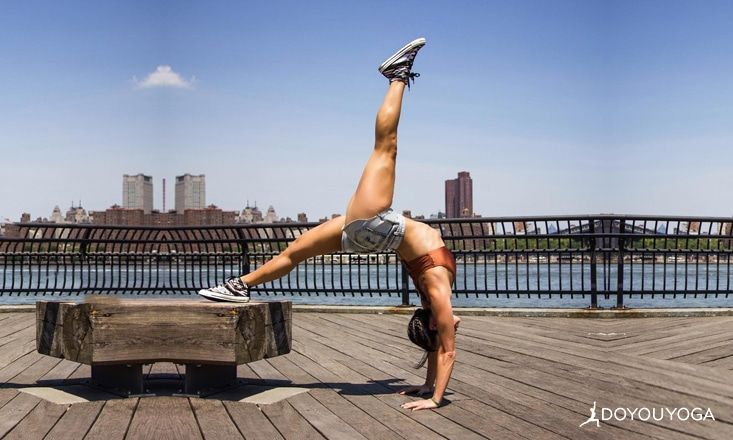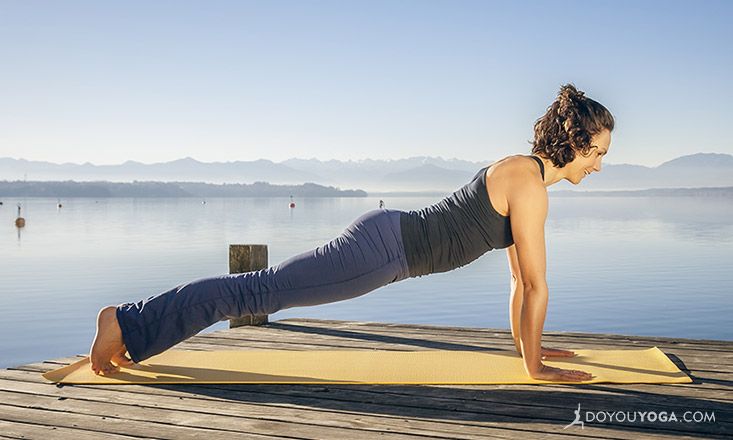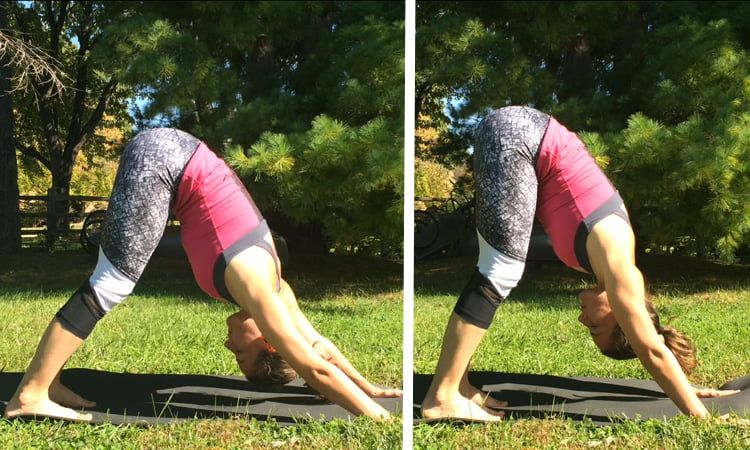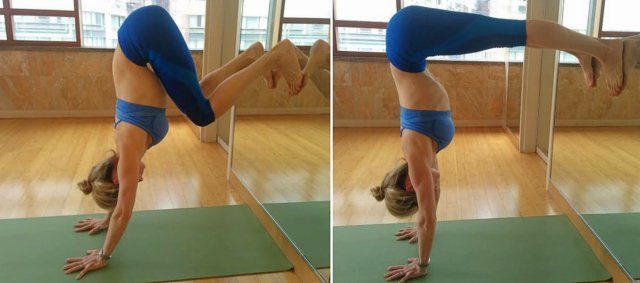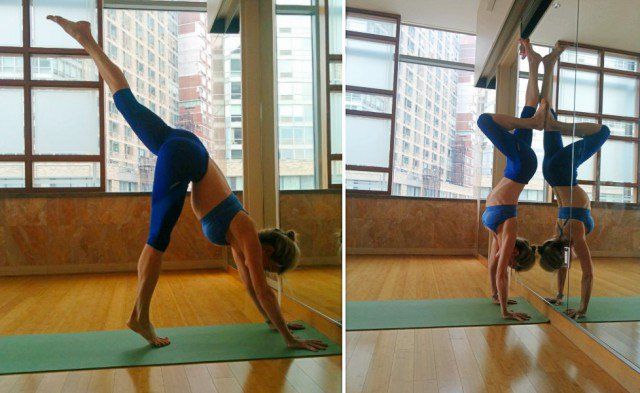Handstand, or Adho Mukha Vrksasana, is an advanced inversion that requires body strength and balance. A regular practice of the pose can improve circulation, keep bones and the endocrine system healthy, and help you shift your perspective.
Handstand is a physically challenging pose and requires core, leg and arm strength. It is also mentally challenging, literally turning your world upside down and activating the fight or flight response produced by the sympathetic nervous system.
If inversions are new to you, it can feel weird and even scary at first. But practice makes progress with handstand, and this fear can be transformed in confidence with a solid preparation for the pose. If you want to get into the habit of practicing yoga every day, you should sign up to the free 30 Day Yoga Challenge. You’ll gain strength and you’ll get used to going upside down!
Handstand is attainable for everyone—you just need to learn to teach your mind and body to execute the pose safely. Try out these yoga poses to prep for handstand to begin and work your way into the posture, improve the form, or explore the pose more in depth.
Plank
Handstand requires strong core and arm muscles, and Plank pose helps prepare you for it by strengthening the whole body. It also helps to prepare the wrists for the strength that is needed to support handstand.
Side Plank
Like regular Plank, Side Plank helps to strengthen the arms, wrists and core, especially the oblique muscles. It also helps you explore your balance, and develop an awareness of differences between the left and right sides. Feeling balanced and aware is a key component of handstand.
Boat Pose
Boat Pose is all about the core. It also stretches the hamstrings and strengthens the hips, which will help you control the lower half of the body when you are inverted in handstand. Navasana also helps you find balance and promotes confidence.
Downward Dog with Steps
Downward Dog is a great pose to explore, launching into handstand and mentally preparing for the appropriate body alignment. It stretches and strengthens the arms, increases shoulder flexibility, and stretches the low body.
As an accessible inversion, it also helps you start observing alignment. Adding dynamic movement to the pose helps the exploration. Once in Down Dog, walk the feet six inches closer to the hands. Adjust to the feeling and start to envision your hips over the shoulders, shoulders over the wrists. Walk up one to two inches more and imagine your legs lifting.
Warrior III
All of the Warrior poses are named after the famous warrior and incarnation of Shiva, Virabhadra, and represent fierce strength. Warrior III helps you build your own fierce mindset to launch into handstand fearlessly.
The pose also strengthens the legs, promotes balance, and creates awareness around the hips—a key point of alignment in handstand. Warrior III also helps you mentally prepare for handstand by launching up, balancing and finding stability in your body.
Standing Split
Standing Split is a precursor pose to launching into handstand. It warms up your lower body and your arms, and familiarizes your mind and body with having one leg balanced in the air. This pose is also an opportunity to explore how stable you feel on your left and right sides, and find a comfortable way to launch into handstand.
L Hops
This exercise is similar to standing splits, but instead of the leg reach toward the sky, it is stretched outward, mirroring the letter “L” with the body. Keep one leg extended out with the foot flexed, and gently hop up and explore what it feels like to have your feet away from the ground.
Practicing this movement will help build strength in the arms and core, and help you dynamically explore the beginning of lifting into handstand.
L Handstand with Support
To enter this exercise, begin in Downward Dog with the heels near a wall or stable structure. Slowly walk the feet up, starting with one foot and eventually moving to both feet up wall or structure.
The purpose of this exercise is to acclimate your body to the inversion and allow the blood flow to reverse in the upper half of the body. This exercise also helps build strength in the arms and core.
Handstand with Support
We all need a little support sometime, and a sturdy wall or other structure is a great prop while practicing handstand. Utilize your L Hops to launch yourself into a handstand against a wall. Notice your body alignment, and do a body scan. Observe what it feels like to be inverted in your body and your mind.
Child’s Pose
The intensity of handstand requires counter poses to release the tension created. Release into Balasana and bring the knees wide to stretch the hips, or keep them together to release the back.
Handstands require patience. The key is not to focus on the end product, but to enjoy and experience the practice. Whether you are advanced in your handstands or just starting out, building your body and mind are essential to reaching and improving the pose.
Get out there, start practicing, and shift your perspective one step or pose at a time. And don’t forget to have some fun!
